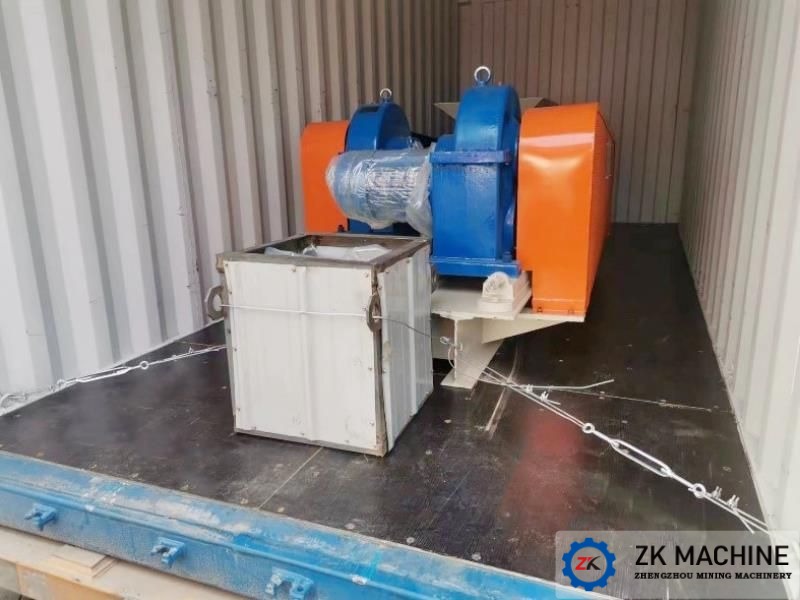Introduction to Molecular Sieve Production Process
1. Introduction to Molecular Sieve
Molecular sieves are aluminosilicate compounds with a cubic lattice. Molecular sieves have a uniform microporous structure, and their pore diameters are uniform. These pores can adsorb molecules smaller than their diameters into the interior of the cavity, and have a preferential adsorption capacity for polar molecules and unsaturated molecules, so they can absorb polar molecules. Molecules with different degrees of solubility, degrees of saturation, molecular sizes and boiling points are separated, that is, they have the function of "sieving" molecules, so they are called molecular sieves. Molecular sieves are widely used because of their high adsorption capacity, strong thermal stability and other advantages that other adsorbents do not have.
2. Molecular sieve production process
2.1 Raw material mixing:
Pour kaolin and 4A/3A zeolite raw powder into the conical mixer according to a certain ratio, start the mixer and stir for about 90 minutes. The more even the mix, the better.
2.2 Granulation:
Put the uniformly stirred raw powder into the swinging granulator in batches, turn on the swinging granulator, and add the sodium tripolyphosphate solution while stirring (the concentration of the sodium tripolyphosphate solution is water: sodium tripolyphosphate = 20: 1). Small grains can be screened out. This step is required for the first granulation to make grains. As long as the production is not stopped later, this step is no longer needed to make grains.
Turn on the icing machine. Pour the prepared crystal grains into it, slowly spray the prepared sodium tripolyphosphate solution, when the particles are wet, sprinkle the mixed raw materials in, after a period of time, the crystal grains will gradually increase, this process is For granulation.
2.3 Screening:
When the particle size in the sugar coating machine increases to a certain extent, it is taken out and sieved on a flat sieve. Generally, it is sieved on a sieve of 1.0-1.4mm, and the sieved particles of three particle sizes (that is, less than 1.0mm, between 1.0-1.4mm, and greater than 1.4mm) are put into different sugar coating machines to granulate separately. Such a cycle operation is granulation. When the particle size reaches the required requirements, stop spraying the solution and no longer add the original powder. This process is called exposure, and it can be out of the pot after half an hour of exposure.
The molecular sieve that will be out of the pot must first be tested for its strength in the laboratory, and it can be out of the pot when its strength meets the standard, otherwise it is an unqualified product, and it can be crushed and used as raw powder, or for other treatments.
2.4 Drying:
The process of putting the molecular sieve out of the pot into the belt dryer to dry; the belt dryer is divided into 4 heating zones, and the temperature is set respectively: 50°C for the first zone, 70°C for the second zone, 80°C for the third zone, and 60°C for the fourth zone. ℃. The smaller the speed at which the belt dryer is pushed forward, the better the drying effect.
2.5 Roasting:
The dried molecular sieve is put into a roasting furnace for calcination to obtain the finished molecular sieve. The roaster needs to be preheated for two days for the first use, and it needs to be preheated for one day when it is used after a period of time. The roaster is divided into 9 heating zones, and the optimum heating temperature for molecular sieves with different particle sizes is different. If the temperature is too high or too low, it will lead to poor strength and water absorption; the temperature difference between the laboratory muffle furnace and the industrial roasting furnace is about 100 ° C, and the molecular sieve can be measured in the laboratory first. °C is the best calcining temperature for the calciner. The currently known calcination temperatures of different particle sizes are:
When the particle size is less than 1.6mm, the set temperature of each zone of the roasting furnace is 450, 450, 500, 550, 600, 650, 700, 700, 600. The flow rate V=35g/s.
When the particle size is less than 1.6-2.4mm, the set temperature of each zone of the roasting furnace is 450, 450, 500, 550, 600, 700, 750, 750, 600, and the flow rate V=35g/s.




